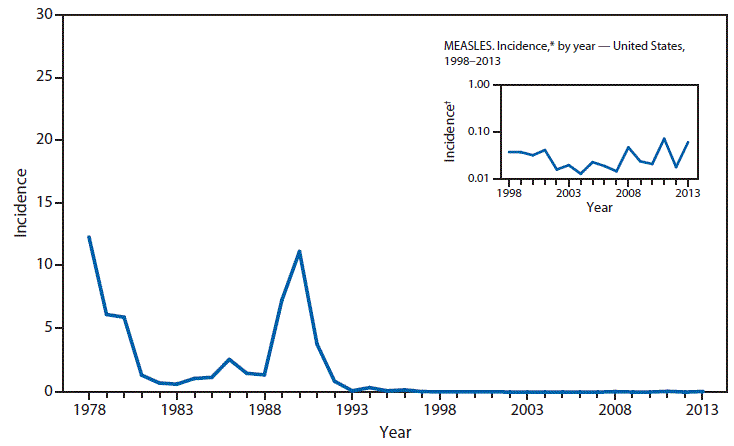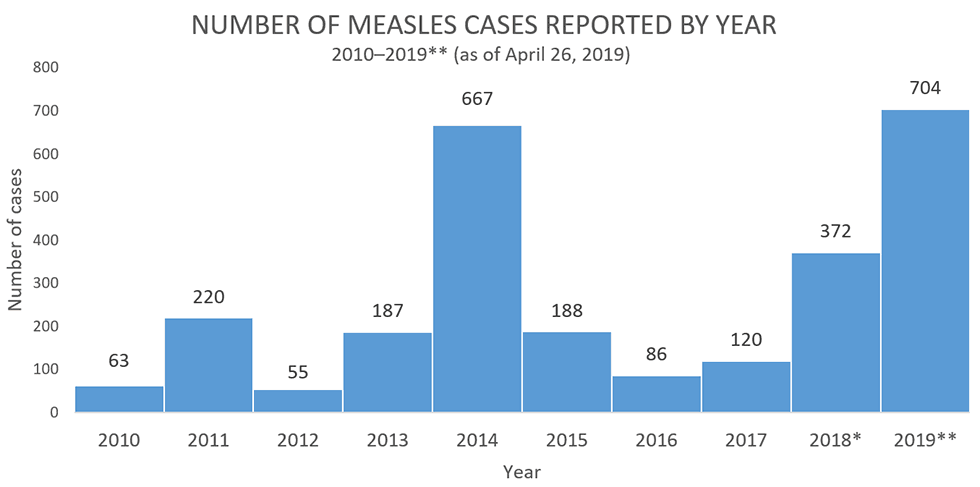A funny thing happened on the way to the loss of religious liberty and parental rights in the United States this spring. The CDC and is public health colleagues kept everyone’s attention firmly focused on Measles, while they quietly published papers acknowledging that the oral polio vaccine continues to spread polio.
In 2000, the World Health Organization Western Pacific Region declared Papua New Guinea (PNG) free of indigenous wild polio virus. PNG is one of 37 countries or regions with a wild polio-free certification. As Bauri, et al reported in Notes from the Field (1) in February 2019, the PNG National Department of Health confirmed an outbreak of poliomyelitis “caused by circulating vaccine-derived poliovirus type 1 (cVDPV1) following isolation of genetically linked virus form a patient with paralysis and non-household community contacts.” A six- year old boy having received 2 doses of the Sabin oral polio vaccine (OPV), was identified as the ‘index patient’. Six months later, 26 confirmed cases of circulating vaccine-derived polio had been identified in nine of the 22 PNG provinces including 19 in children less than five years of age.
Bauri also reports that the Acute Flaccid Paralysis (AFP) Surveillance system is being improved in PNG and the 2018 surveillance found 7.0 per 100,000 persons under the age of 15 years with non-polio AFP compared with 0.8 in 2017. Less than 50 percent of the cases of non-polio AFP were further evaluated through stool sampling. There is also expressed concern due to the discovery of cVDPV1 (the vaccine strain poliovirus) in seven sewage samples in major urban environments in PNG. CDC issued a level 2 Travel Health Notice for all travelers to PNG to be fully vaccinated against polio.
In March, Mbaeyi, et al, (2) published, Update on Vaccine-Derived Poliovirus Outbreaks – the Democratic Republic of the Congo and the Horn of Africa, 2017-2018. The authors note the use of the live attenuated Sabin oral polio vaccine (OPV) has helped with the global eradication goals while also noted its use is resulting in the person to person transmission of vaccine-derived poliovirus (VDPV) disease. VDPV disease presents with paralysis.
Two months after this report, Green, et al (3) reported a paper entitled Progress Towards Polio Eradication in which the team recounts the success of the Global Polio Eradication Initiative (GPEI). The program which began in 1988, the authors claim that wild poliovirus (WPV) transmission had been interrupted in all countries except Afghanistan, Nigeria, and Pakistan. Apparently, there are now 3 Wild Polio Virus types. WPV type 2 (WPV2) was declared eradicated in 2012 and WPV type 3 (WPV3) had not been detected since 2012. Eight countries during the study period reported 210 cases of circulating vaccine-derived poliovirus (CVDPV) from 2017 to May 2019. The eight countries (Democratic Republic of Congo, Indonesia, Mozambique, Niger, Nigeria, Papua New Guinea, Somalia, and Syria). Through concentrated international efforts, 1.8 billion doses of polio vaccines both oral and injected were allocated for use in 2017.
The authors note that the use of AFP Surveillance systems among children less than 15 years of age is how detection of polio cases occurs. When a child develops AFP, a stool sample is tested. If a child with either type of polio (wild or vaccine derived) does not present symptoms that include AFP, their case likely will not be detected or counted. In 2017, 22 wild polio virus type 1 (WPV1) cases were reported in Afghanistan and Pakistan and in 2018 33 cases. In the first quarter of 2019, 12 WPV1 cases were confirmed in Afghanistan and Pakistan.
All three of these papers discuss measures to curtail the spread of polio virus through increased immunizations. None discuss public health measures to decrease the risk through improvements in sewer systems and reducing the risk of transmission while the virus sheds, which all three report the discovery of circulating vaccine-derived poliovirus in sewage systems. While vaccines are considered the second most important advance in public health, the first is clean water and effective sewer systems. Sadly these public health experts are ignoring the obvious additional measure needed.
It would seem that the CDC and WHO scientists have chosen not to inform the WHO Director-General because Dr. Tedros is quoted in a WHO bulletin, “My wish for 2019 is for zero polio transmission.” (4)
A time for moral outrage. None of these stories presents any discussion on a conversion to the IPV which is not likely to transmit poliovirus.
My question is why? Why are we as a global community not willing to promote IPV world-wide?
Why haven’t Bill and Melinda Gates through their vaccine promotions in the Gates Foundation used their influence to help stop the spread of vaccine-derived polio?
Twenty years ago the Advisory Committee on Immunization Practices recommended all polio virus vaccines administered in the United States ““be an inactivated poliovirus vaccine (IPV) beginning January 1, 2000.”(5) In the 1999 decision, it was reported, “Since 1979, the only indigenous cases of poliomyelitis reported in the United States (n=144) have been associated with use of the live oral poliovirus vaccine (OPV) (an additional six imported cases have been reported since 1979, the last of which occurred in 1993).”(6) The ACIP suggest the risk for vaccine-associated paralytic polio (VAPP) would be anticipated once in every 2.4 million doses distributed.
The spread of polio through the oral polio vaccine is well documented. Burns, et all provide a detailed description of the issues in their 2014 paper, Vaccine-Derived Poliomyelitis. (7) They also note that the OPV can result in chronic polio infection.
In looking at this, I am reminded of the discussions before the Oversight Committee, at the State Department during the Mercury Treaty discussions and at numerous scientific and advisory committee meetings. When Congressman Burton asked HHS to ‘get the mercury out’ and to set a preference for mercury-free (i.e. thimerosal) vaccines, he was told repeatedly that the United States could not make a recommendation or policy to promote mercury free vaccines in the United States and not do the same world-wide. And yet, that is exactly what has been going on with polio since 1999. So, CDC and others at the same time they were saying we must shift from OPV to IPV in the US for safety reasons, were unwilling to use the same strategy to accelerate the removal of thimerosal from vaccines. And misrepresented this policy of needing to have some recommendations globally as domestically to Congress and the public.
Polio is one of those infectious diseases that freak people out. The goal for 30 years has been to eradicate polio. To succeed, maybe it is time to discuss a shift from OPV to IPV vaccines globally. I do not want to see the WHO continue their focus on discussing vaccine hesitancy as a condition to be diagnosed, but rather to talk about how to improve the safety of the vaccines administered globally and to incorporate into this discussion a need to make increased efforts to improve the availability of safe, clean water and adequate sewage systems to reduce the transmission of all types of polio and other conditions such as cholera.
Sources Cited
1. Bauri M, Wilkinson AL, Ropa B, Feldon K, Snider CJ, Anand A, et al. Notes from the Field: Circulating Vaccine-Derived Poliovirus Type 1 and Outbreak Response – Papua New Guinea, 2018. MMWR Morb Mortal Wkly Rep. 2019;68(5):119-20. doi: 10.15585/mmwr.mm6805a6. PubMed PMID: 30730867; PubMed Central PMCID: PMCPMC6366675 potential conflicts of interest. No potential conflicts of interest were disclosed.
2. Mbaeyi C, Alleman MM, Ehrhardt D, Wiesen E, Burns CC, Liu H, et al. Update on Vaccine-Derived Poliovirus Outbreaks – Democratic Republic of the Congo and Horn of Africa, 2017-2018. MMWR Morb Mortal Wkly Rep. 2019;68(9):225-30. doi: 10.15585/mmwr.mm6809a2. PubMed PMID: 30845121; PubMed Central PMCID: PMCPMC6421971 potential conflicts of interest. No potential conflicts of interest were disclosed.
3. Greene SA, Ahmed J, Datta SD, Burns CC, Quddus A, Vertefeuille JF, et al. Progress Toward Polio Eradication – Worldwide, January 2017-March 2019. MMWR Morb Mortal Wkly Rep. 2019;68(20):458-62. doi: 10.15585/mmwr.mm6820a3. PubMed PMID: 31120868; PubMed Central PMCID: PMCPMC6532951 potential conflicts of interest. No potential conflicts of interest were disclosed.
4. Public health round-up. Bull World Health Organ. 2019;97(2):77-8. doi: 10.2471/BLT.19.010219. PubMed PMID: 30728612; PubMed Central PMCID: PMCPMC6357566.
5. Centers for Disease C, Prevention. Updated recommendations of the Advisory Committee on Immunization Practices (ACIP) regarding routine poliovirus vaccination. MMWR Morb Mortal Wkly Rep. 2009;58(30):829-30. PubMed PMID: 19661857.
6. Centers for Disease C, Prevention. Recommendations of the Advisory Committee on Immunization Practices: revised recommendations for routine poliomyelitis vaccination. MMWR Morb Mortal Wkly Rep. 1999;48(27):590. PubMed PMID: 10428098.
7. Burns CC, Diop OM, Sutter RW, Kew OM. Vaccine-derived polioviruses. J Infect Dis. 2014;210 Suppl 1:S283-93. doi: 10.1093/infdis/jiu295. PubMed PMID: 25316847.
Always,
Beth Clay, June 27, 2019





